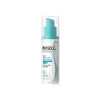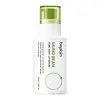What's inside
What's inside
 Key Ingredients
Key Ingredients

 Benefits
Benefits

 Concerns
Concerns

 Ingredients Side-by-side
Ingredients Side-by-side

Water
Skin ConditioningDipropylene Glycol
HumectantGlycerin
Humectant1,2-Hexanediol
Skin ConditioningNiacinamide
SmoothingPanthenol
Skin ConditioningC15-19 Alkane
SolventSerine
MaskingAmmonium Acryloyldimethyltaurate/Vp Copolymer
Triethylhexanoin
MaskingUndecane
EmollientCarnitine
CleansingTromethamine
BufferingButylene Glycol
HumectantAcrylates/C10-30 Alkyl Acrylate Crosspolymer
Emulsion StabilisingCoco-Caprylate/Caprate
EmollientCaprylic/Capric Triglyceride
MaskingAscorbyl Glucoside
AntioxidantSalicylic Acid
MaskingSclerotium Gum
Emulsion StabilisingTridecane
PerfumingCetearyl Alcohol
EmollientLinoleic Acid
CleansingArachidyl Alcohol
EmollientSqualane
EmollientBehenyl Alcohol
EmollientButyrospermum Parkii Butter
Skin ConditioningPhytosteryl/Isostearyl/Cetyl/Stearyl/Behenyl Dimer Dilinoleate
Skin ConditioningMadecassoside
AntioxidantLinolenic Acid
CleansingPropanediol
SolventTrisodium EDTA
Arachidyl Glucoside
EmulsifyingArginine
MaskingHydrogenated Lecithin
EmulsifyingHydrolyzed Hyaluronic Acid
HumectantSarcosine
Skin ConditioningSilica
AbrasiveSodium Hyaluronate
HumectantAcetamide Mea
HumectantCitric Acid
BufferingBeta-Glucan
Skin ConditioningDimethicone
EmollientCeramide NP
Skin ConditioningCholesterol
EmollientTocopherol
AntioxidantCarbomer
Emulsion StabilisingPalmitic Acid
EmollientStearic Acid
CleansingXanthan Gum
EmulsifyingPalmitamide Mea
Asiaticoside
AntioxidantMadecassic Acid
Skin ConditioningAsiatic Acid
Skin ConditioningWater, Dipropylene Glycol, Glycerin, 1,2-Hexanediol, Niacinamide, Panthenol, C15-19 Alkane, Serine, Ammonium Acryloyldimethyltaurate/Vp Copolymer, Triethylhexanoin, Undecane, Carnitine, Tromethamine, Butylene Glycol, Acrylates/C10-30 Alkyl Acrylate Crosspolymer, Coco-Caprylate/Caprate, Caprylic/Capric Triglyceride, Ascorbyl Glucoside, Salicylic Acid, Sclerotium Gum, Tridecane, Cetearyl Alcohol, Linoleic Acid, Arachidyl Alcohol, Squalane, Behenyl Alcohol, Butyrospermum Parkii Butter, Phytosteryl/Isostearyl/Cetyl/Stearyl/Behenyl Dimer Dilinoleate, Madecassoside, Linolenic Acid, Propanediol, Trisodium EDTA, Arachidyl Glucoside, Arginine, Hydrogenated Lecithin, Hydrolyzed Hyaluronic Acid, Sarcosine, Silica, Sodium Hyaluronate, Acetamide Mea, Citric Acid, Beta-Glucan, Dimethicone, Ceramide NP, Cholesterol, Tocopherol, Carbomer, Palmitic Acid, Stearic Acid, Xanthan Gum, Palmitamide Mea, Asiaticoside, Madecassic Acid, Asiatic Acid
Water
Skin ConditioningGlycerin
HumectantDipropylene Glycol
HumectantNiacinamide
SmoothingXylitol
Humectant1,2-Hexanediol
Skin ConditioningButylene Glycol
HumectantHydroxyacetophenone
AntioxidantAcrylates/C10-30 Alkyl Acrylate Crosspolymer
Emulsion StabilisingVigna Radiata Seed Extract
Skin ConditioningTromethamine
BufferingEthylhexylglycerin
Skin ConditioningHydrolyzed Gardenia Florida Extract
AntioxidantHydrolyzed Malt Extract
Skin ConditioningHydrolyzed Viola Tricolor Extract
Skin ProtectingMenthoxypropanediol
MaskingAdenosine
Skin ConditioningTrisodium Ethylenediamine Disuccinate
Pentylene Glycol
Skin ConditioningGlyceryl Glucoside
HumectantPunica Granatum Flower Extract
Skin ConditioningDextrin
AbsorbentHyaluronic Acid
HumectantGardenia Florida Fruit Extract
Skin ConditioningPhaseolus Radiatus Seed Extract
Skin ConditioningAnanas Sativus Fruit Extract
Skin ConditioningMalus Domestica Fruit Extract
AntioxidantPrunus Persica Fruit Extract
AbrasiveVaccinium Angustifolium Fruit Extract
Skin ProtectingGlycogen
HumectantAcetyl Hexapeptide-8
HumectantWater, Glycerin, Dipropylene Glycol, Niacinamide, Xylitol, 1,2-Hexanediol, Butylene Glycol, Hydroxyacetophenone, Acrylates/C10-30 Alkyl Acrylate Crosspolymer, Vigna Radiata Seed Extract, Tromethamine, Ethylhexylglycerin, Hydrolyzed Gardenia Florida Extract, Hydrolyzed Malt Extract, Hydrolyzed Viola Tricolor Extract, Menthoxypropanediol, Adenosine, Trisodium Ethylenediamine Disuccinate, Pentylene Glycol, Glyceryl Glucoside, Punica Granatum Flower Extract, Dextrin, Hyaluronic Acid, Gardenia Florida Fruit Extract, Phaseolus Radiatus Seed Extract, Ananas Sativus Fruit Extract, Malus Domestica Fruit Extract, Prunus Persica Fruit Extract, Vaccinium Angustifolium Fruit Extract, Glycogen, Acetyl Hexapeptide-8
 Reviews
Reviews

Ingredients Explained
These ingredients are found in both products.
Ingredients higher up in an ingredient list are typically present in a larger amount.
1,2-Hexanediol is a synthetic liquid and another multi-functional powerhouse.
It is a:
- Humectant, drawing moisture into the skin
- Emollient, helping to soften skin
- Solvent, dispersing and stabilizing formulas
- Preservative booster, enhancing the antimicrobial activity of other preservatives
Acrylates/C10-30 Alkyl Acrylate Crosspolymer is a synthetic polymer. It is used to thicken and improve the texture of products. Due to its properties, it can prevent water and oil ingredients from separating.
Butylene Glycol (or BG) is used within cosmetic products for a few different reasons:
Overall, Butylene Glycol is a safe and well-rounded ingredient that works well with other ingredients.
Though this ingredient works well with most skin types, some people with sensitive skin may experience a reaction such as allergic rashes, closed comedones, or itchiness.
Learn more about Butylene GlycolDipropylene Glycol is a synthetically created humectant, stabilizer, and solvent.
This ingredient helps:
Dipropylene glycol is technically an alcohol, but it belongs to the glycol family (often considered part of the ‘good’ alcohols). This means it is hydrating and gentle on skin unlike drying solvent alcohols like denatured alcohol.
As a masking agent, Dipropylene Glycol can be used to cover the smell of other ingredients. However, it does not have a scent.
Studies show Dipropylene Glycol is considered safe to use in skincare.
Learn more about Dipropylene GlycolGlycerin is already naturally found in your skin. It helps moisturize and protect your skin.
A study from 2016 found glycerin to be more effective as a humectant than AHAs and hyaluronic acid.
As a humectant, it helps the skin stay hydrated by pulling moisture to your skin. The low molecular weight of glycerin allows it to pull moisture into the deeper layers of your skin.
Hydrated skin improves your skin barrier; Your skin barrier helps protect against irritants and bacteria.
Glycerin has also been found to have antimicrobial and antiviral properties. Due to these properties, glycerin is often used in wound and burn treatments.
In cosmetics, glycerin is usually derived from plants such as soybean or palm. However, it can also be sourced from animals, such as tallow or animal fat.
This ingredient is organic, colorless, odorless, and non-toxic.
Glycerin is the name for this ingredient in American English. British English uses Glycerol/Glycerine.
Learn more about GlycerinNiacinamide is a multitasking form of vitamin B3 that strengthens the skin barrier, reduces pores and dark spots, regulates oil, and improves signs of aging.
And the best part? It's gentle and well-tolerated by most skin types, including sensitive and reactive skin.
You might have heard of "niacin flush", or the reddening of skin that causes itchiness. Niacinamide has not been found to cause this.
In very rare cases, some individuals may not be able to tolerate niacinamide at all or experience an allergic reaction to it.
If you are experiencing flaking, irritation, and dryness with this ingredient, be sure to double check all your products as this ingredient can be found in all categories of skincare.
When incorporating niacinamide into your routine, look out for concentration amounts. Typically, 5% niacinamide provides benefits such as fading dark spots. However, if you have sensitive skin, it is better to begin with a smaller concentration.
When you apply niacinamide to your skin, your body converts it into nicotinamide adenine dinucleotide (NAD). NAD is an essential coenzyme that is already found in your cells as "fuel" and powers countless biological processes.
In your skin, NAD helps repair cell damage, produce new healthy cells, support collagen production, strengthen the skin barrier, and fight environmental stressors (like UV and pollution).
Our natural NAD levels start to decline with age, leading to slower skin repair, visible aging, and a weaker skin barrier. By providing your skin niacinamide, you're recharging your skin's NAD levels. This leads to stronger, healthier, and younger looking skin.
Another name for vitamin B3 is nicotinamide. This vitamin is water-soluble and our bodies don't store it. We obtain Vitamin B3 from either food or skincare. Meat, fish, wheat, yeast, and leafy greens contain vitamin B3.
The type of niacinamide used in skincare is synthetically created.
Learn more about NiacinamideTromethamine helps balance the pH and improve the texture of a product. It is synthetically created.
As an emulsifier, Tromethamine prevents oil and water ingredients from separating. This helps stabilize the product and elongate a product's shelf life. Tromethamine also makes a product thicker.
Tromethamine helps balance the pH level of a product. Normal pH level of skin is slightly acidic (~4.75-5.5). The acidity of our skin is maintained by our glands and skin biome. Being slightly acidic allows our skin to create an "acid mantle". This acid mantle is a thin barrier that protects our skin from bacteria and contaminants.
Oral Tromethanmine is an anti-inflammatory drug but plays the role of masking, adding fragrance, and/or balancing pH in skincare.
1,3-Propanediol, 2-amino-2-(hydroxymethyl)-
Learn more about TromethamineWater. It's the most common cosmetic ingredient of all. You'll usually see it at the top of ingredient lists, meaning that it makes up the largest part of the product.
So why is it so popular? Water most often acts as a solvent - this means that it helps dissolve other ingredients into the formulation.
You'll also recognize water as that liquid we all need to stay alive. If you see this, drink a glass of water. Stay hydrated!
Learn more about Water